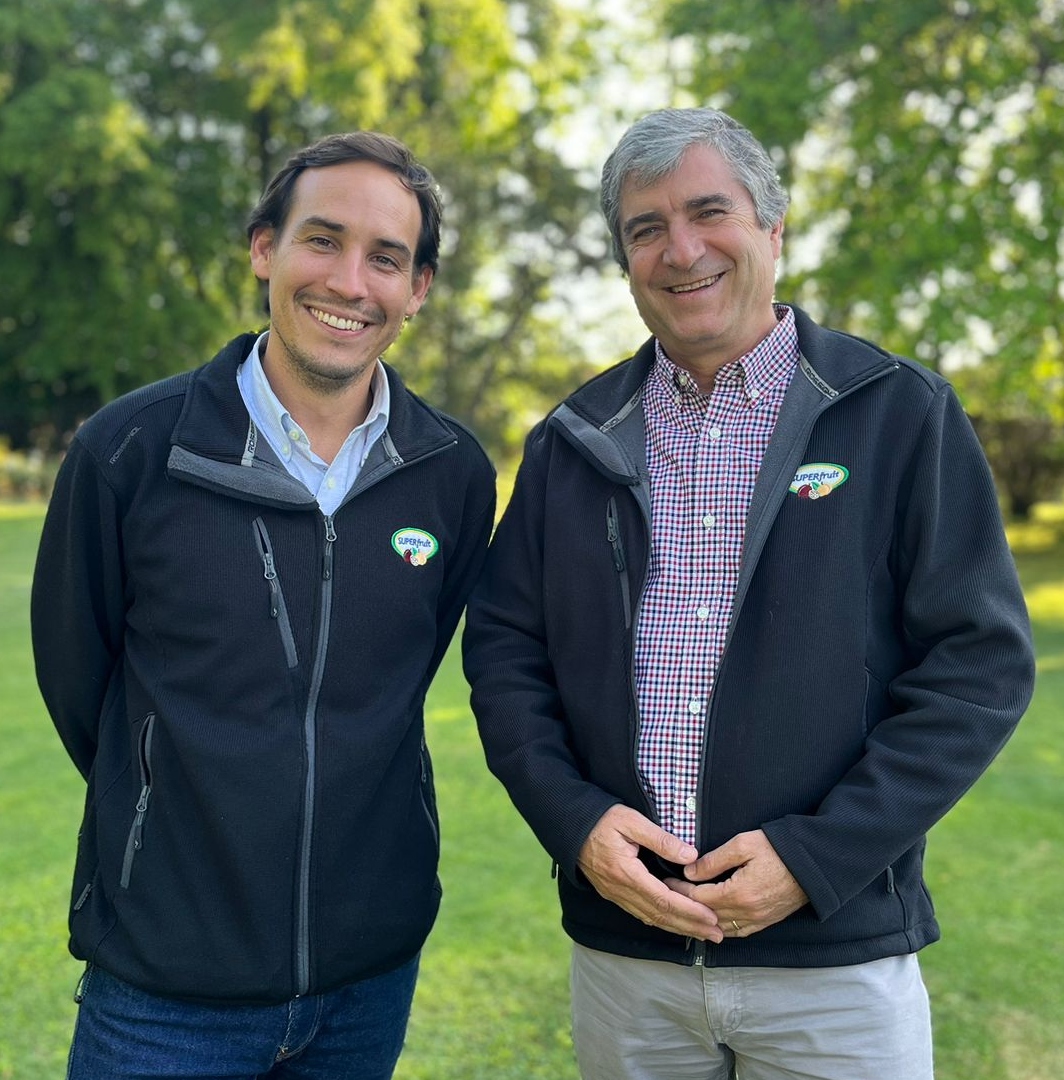Pablo Morandé, general director, and José Antonio Soffia, assistant sales manager of Superfruit, a company associated with Chileprunes, express the importance of working, consistently, every year, on the quality of this fruit, considering all the processes that are carried out. they give in the garden.
As a new season for Chilean fruit in international markets is about to close, it is a time of balance in the Southern Hemisphere. In that sense, at Superfruit, they comment that in terms of prices of prunes, after two years at the top of the cycle, with low productions in the world, now that the main producing countries return to normality in their volumes, “we see a stabilization and downward price behavior”.
This is stated by Pablo Morandé, managing director, and José Antonio Soffia, assistant sales manager of Superfruit, a company that has 1,000 hectares of D’Agen plum plantations and 500 hectares of walnut trees, as well as peaches, vines, among other fruits.
“We no longer have kiwis, they were very old orchards, and now we have replaced them with cherries and nectarines,” they point out in the company that produces, processes and exports most of their fruit, thanks to 11 fields in Rancagua, Melipilla and Lolol, areas located between 90 and 200 kilometers south of Santiago.
“We are vertically integrated, which is very important for us in terms of product traceability and control of the complete production chain, which results in high quality fruit for final consumers,” says Pablo Morandé.
This final consumer, in the case of Superfruit, is located in nearly 70 countries on all continents, which forces us to be insistent on quality work, which starts with teamwork that is born in the orchard: how to do pruning, fertilization, finding the best raw material for the processes, etc. “This allows us to have a Chilean prunes at the level of the best in the world, along with the Californian and French ones.”
Consistency and experience
In addition, consistency is required, he points out, with a quality that is consistent over time, and where the concept of quality does not necessarily have to do with the size of the fruit, since large, medium or small prunes can have it, and it all depends. of the final product that you want to obtain (from the sale of the fruit itself, to pulps and snacks), “In each caliber you have to send the best, each one has its market,” he expresses.
Superfruit has vast experience exporting this fruit, which began in 2004.
The firm exports between 8 to 9 thousand Metric Tons of dried plums per year, and of that amount, about 20% goes to China, “a very attractive fresh and dried market, and which has a gigantic space for growth, to the extent that we do things well in terms of quality,” adds José Antonio Soffia.
Of course, he indicates, we must do more in marketing and promoting prunes, even more so when in recent years a series of benefits of this fruit have been discovered. These range from the best known and oldest such as preventing constipation and helping to maintain intestinal regularity, thanks to its fiber, to more recent studies indicating that it helps blood pressure and improves heart health in general, as well as that it is the best food for the treatment of osteoporosis.
“We must improve promotion. First, align ourselves as a Chilean industry, as well as between industry and authorities. Then, address the issue in conjunction with other countries or producing areas. The conditions are in place to make known, overall, a highly healthy product, and where the trend points towards the consumption of this type of food,” adds Pablo Morandé.
Regarding the Anuga Fair, held a few weeks ago, and which they attended, they agree that it was a very good fair, “We met with the majority of the clients who, after the pandemic, were able to see each other face to face again. We strengthened contacts and relationships, seeing Europeans very focused on reaching new volumes for Christmas. Already in Gulfood -beginning of next year-, we will be able to talk about prices and project the new season”, concludes José Antonio Soffia.



